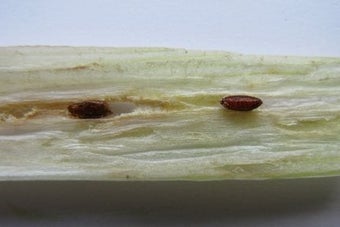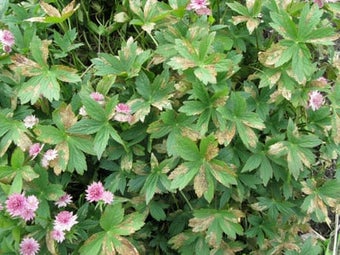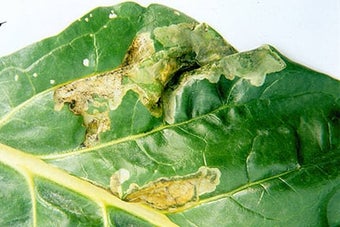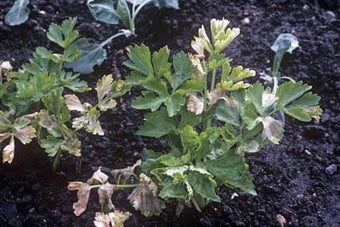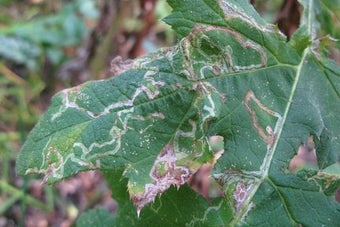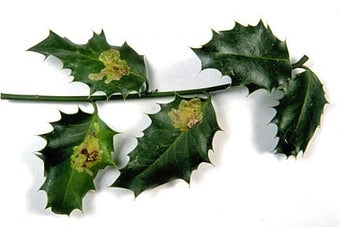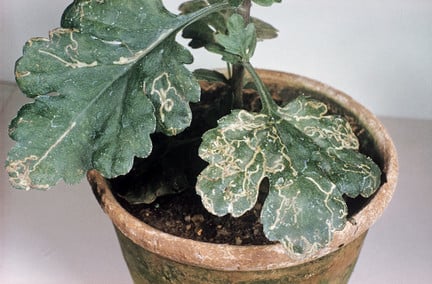
Quick facts
Common name - Chrysanthemum leaf miner
Scientific name - Chromatomyia(Phytomyza) syngenesiae
Plants affected - Chrysanthemum, Gazania, Senecio cineraria, Argyranthemum and many others
Main cause - Larvae of a leaf-mining fly tunnelling in the foliage
Timing - Mainly summer-autumn but can be all year round on glasshouse plants
What is chrysanthemum leaf miner?
There are more than 800 species of insect in Britain that mine leaves as larvae, this includes beetles, sawflies, moths and flies. More information about some for these insects can be found at .
Within the true flies (Diptera) most of the more than 300 species in the Agromyzidae are leaf miners, many are very specific in their use of host plants, others can feed on a range of species. More information on Agromyzidae is available from the .
Chrysanthemum leaf miner is a small agromyzid fly that has larvae that feed by tunnelling in the leaves of a wide range of host plants.
Symptoms
The larvae of chrysanthemum leaf miner feed inside the leaves and create long sinuous tunnels that show on the upper leaf surface as white or brown meandering lines. On host plants with small leaves, such as Argyranthemum and Pyrethrum, all of the inside of the leaf may be consumed, so the whole leaf becomes discoloured and dries up.
The adult fly is 2-3 mm long and brownish black in colour. The females scrape the leaf surface to feed on exuded , which causes small pale spots on the upper leaf surface. The larvae are creamy white legless maggots up to 3-4 mm long. The pupal stage is pale brown and the pupae can be found in the leaves at the ends of the mines.
The leaf mines created by the fly's larvae disfigure the leaves and large populations can cause a significant loss of foliage. Plants can be affected in both gardens and greenhouses. The heaviest populations are generally indoors.

Management
- Plants affected by chrysanthemum leaf miner will usually survive and produce flowers, even when there is extensive leaf mining, so this insect can be tolerated.
- Leaf miners can be part of a healthy balanced garden, most species will have natural enemies including parasitoid wasps. Birds such as blue tits can sometimes open mines to consume the larvae within
- Light populations can be dealt with by removing the affected leaves or crushing the larvae or pupae at the ends of the tunnels
Biological Control
The nematode Steinernema feltiae is formulated for control of Chrysanthemum leaf miner in glasshouses and is available from some Biological control suppliers . This should be applied according to the suppliers instructions and can give an 60-80% mortality rate if applied when temperatures are above 8oC.
Download
Biological control suppliers (pdf document)
Biology
On outdoor host plants there are usually two generations of chrysanthemum leaf miner a year, with damage occurring in early summer and late summer-autumn. In heated greenhouses or on susceptible house plants, this fly can continue breeding throughout the year. Eggs are laid singly on the foliage. On hatching, the larva bores into the leaf, where it eats out a tunnel between the upper and lower leaf surface. When fully fed, the larva pupates at the end of its tunnel.


